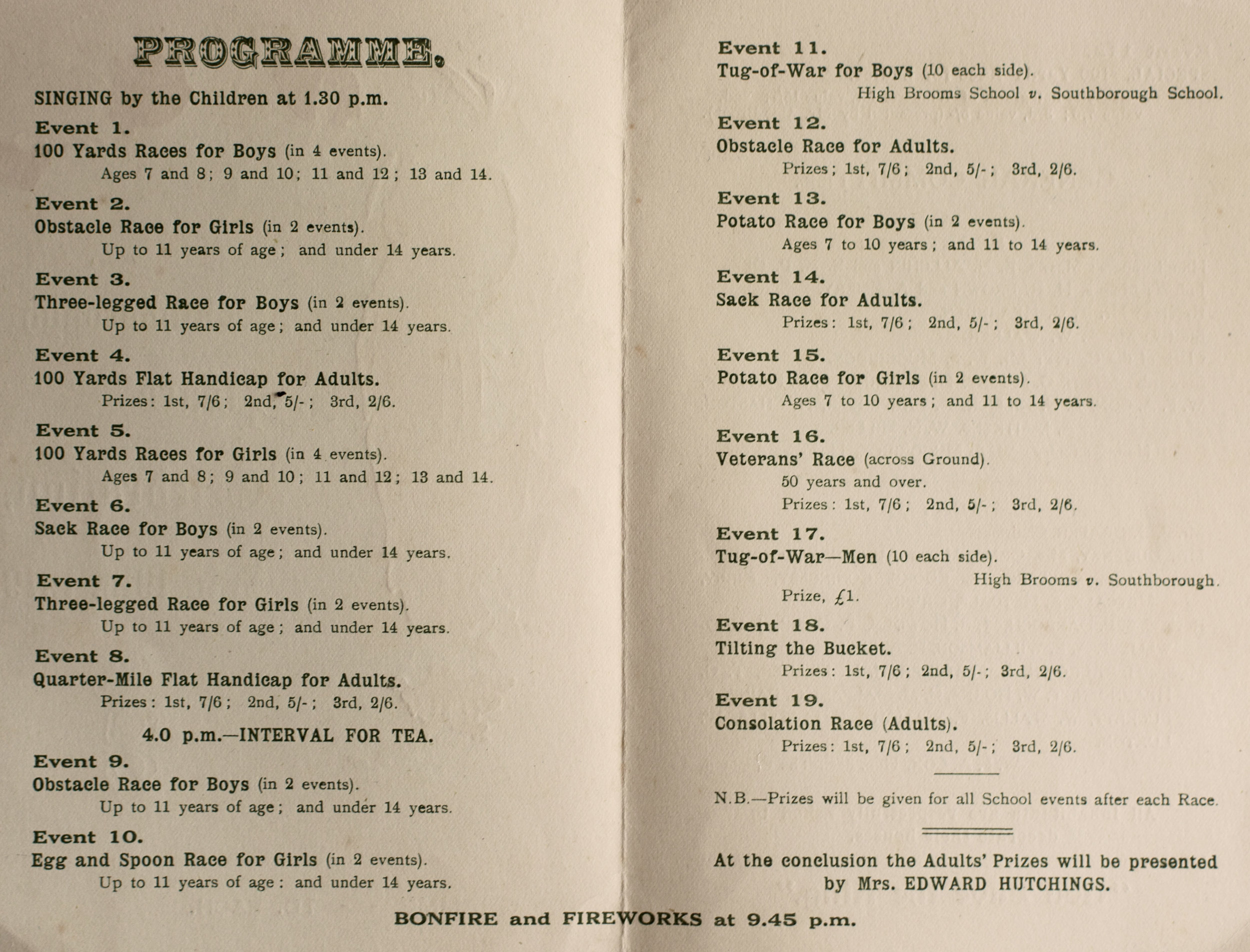Yesterday was the opening of the ‘Secrets of Southborough Common’ exhibition; an exciting showcase of the work funded by the National Heritage Lottery and undertaken by Kent High Weald Partnership, Southborough and High Brooms Archaeological Society and the Southborough Society.
The ongoing work of the Kent High Weald Partnership on the Common has made a huge impact on both the environmental sustainability of the site and for the enjoyment of visitors to our ‘cherished green space’. As part of their work Ian Johnstone and his team have been able to produce detailed mapping of the Common and have published three Southborough Common Circular Walk maps. Along with major clearing and path resurfacing tasks they have also led wildlife, bat and fungi walks and facilitated a Forest School for youngsters to engage with the local environment.
SHAAS has been working on excavating the former ‘Brokes Mill’ site near Powdermill Lane and have unearthed some revealing finds which were on display. They have encouraged children to get involved by hosting some well-supported Archaeology taster days and welcoming visitors as part of the recent Heritage Open Days weekends.
The Southborough Society has sent off the first and most significant part of our archive to be digitised and are in the design stages of a new website that will display our photographs, postcards, maps and articles for the public to have access to for the first time. There was a preview at some of these rarely seen images and artefacts that link to Southborough Common as part of this group show.
Southborough Society’s sixteen panels detailing the Society and what it does, our Digitisation Project, The Common, St Peter’s Church and School and Cricket in Southborough.
At 1pm some fifty people gathered for a guided circular walk led by Ian Johnstone around the Common. Ian was taken back by just how well attended the walk was; testament to how grateful local residents are of this beautiful area and how interested they were to find out more about the history of the Common.
Ian Johnstone, Kent High Weald Partnership, about to start the Circular Walk yesterday.
The walk was based on ‘Walk One’ of the series of Southborough Common walks which featured ten points of interest, including the veteran oak and beech trees, the gravel pit, charcoal platform, former windmill site and the horse ring. Listening to the conversations, many people commented about how, although the regularly walk in the Common they didn't know about its fascinating history and rarely stopped to really look at the flora and fauna.
A really warm and friendly atmosphere amongst the walkers . Here they are heading up along the Wortleberry Wood Bank.
‘On the Boundary of Whortleberry Wood, 1892’. A photograph printed from a glass plate negative in the Southborough Society archive collection.
The boundary of Whortleberry Wood is a distinctive man made bank that was built up to enclose the wood from the ‘adjacent wood pasture and to prevent grazing animals from browsing the coppiced woodland’. Ian informed the walkers that evidence still remained towards the top of the bank of the iron fence that can be seen in the above photograph.
In the area known as the ‘Pineys’.
Heading towards one of the veteran oaks.
The exhibition was buzzing throughout the day and we would like to thank all the visitors for coming along and also Ian Johnstone (KHWP) and Tony Palmer and Di Drummond (SHAAS). Last but not least, we would like to thank the National Heritage Lottery Fund who has enabled us all to participate in such a wide-ranging and beneficial project for the local community.
If you are interested in finding our more about Southborough Common and volunteering and local archaeology, check out the links below:







































